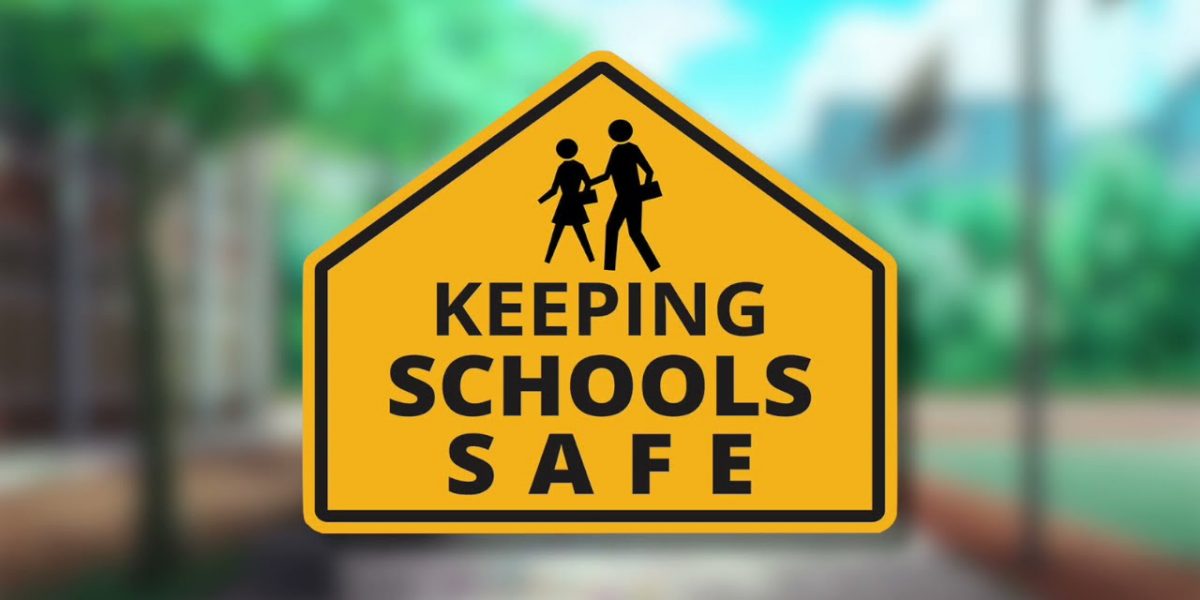INTRODUCTION
Emergencies
can happen at any time. While we can never be completely safe or
immune, for every situation there are simple steps that will improve our
chances to prevent and handle them effectively.
DEFINITIONS OF SAFETY
Safety is freedom from danger or harm: the state of being safe.
Safety is anything that people do to protect themselves or others from harmful accidents. People can prevent accidents by following safety measures.
Child safety is concerned with limiting children’s exposure to hazards and reducing children’s risk of harm. Children are particularly vulnerable to accidents, and their safety requires different approaches from those for adults e. g. digital safety, abuse safety, handling safety, etc
Safety culture is the collection of the beliefs, perceptions and values that employees share in relation to risks within an organization, such as a workplace or community. Wikipedia
Safety culture is a set of ways of doing and thinking that is widely shared by the employees of an organisation in the context of managing the most significant risks associated with its activities.
Keeping teens safe is hard enough in the physical world, let alone the cyberworld of social media, texting, online gaming, and online predators. But you don’t have to stand by and hope for the best—you can take action to help keep your teen safe as they navigate the internet. Learn about the top cyberthreats for teens.
CHARACTERISTICS OF ADOLESCENCE
The five leading characteristics of adolescence are:
📌biological growth and development,
📌an undefined status,
📌increased decision making,
📌 increased pressures, and
📌the search for self.
STAGES OF of ADOLESCENCE
Adolescence, these are years from puberty to adulthood (10years -21years according to WHO), may be roughly divided into three stages:
📌Earlyadolescence, generally ages ten to fourteen. They have brain of a child and body of an adult.
📌Middleadolescence, ages fifteen to seventeen. They have 50% child’s brain and 50% adult’s brain and body of an adult.
📌Lateadolescence, ages eighteen to twenty-one.They have brain of an adult and the body of an adult.
STRATEGIES TO EMBED CULTURE of CHILD SAFETY
Child Safe Standard requires schools to plan, implement and review strategies that will embed a culture of child safety.
A. Guidance for schools in developing their response
B. Compliance with Child Safe Standard
C. Sustaining and improving the school’s child safety culture
A. GUIDANCE FOR SCHOOLS IN DEVELOPING THEIR RESPONSE
Child Safe Right Act provides a part of the framework for all the child protection and safeguarding, which requires a policy or commitment to child safety.
This guidance outlines what is required of schools for compliance with Child Protection Act and provides advice on effective strategies and practices within a school to embed an organisational culture of child safety.
Governance arrangements, underpinned by a firm commitment from school leadership to a school’s values and standards are the starting point to embedding a culture of child safety.
Strategies that seek to prevent harm and neglect (including physical, sexual, emotional, neglect, racial and cultural or religious abuse) all contribute to a child safe culture. It is therefore critical that child safety is part of the everyday thinking and practice of all within the school community.
It is important to maintain the momentum of a child safe culture by monitoring performance and checking that child safety continues to be prominent in the school’s governance and planning.
B. COMPLIANCE WITH CHILD SAFE STANDARD
In preparing for compliance, schools are expected to:
1. review the school’s child safe practices across each of the Child Right Acts and identify priorities
2. address gaps and priorities by developing an Action Plan including allocating responsibilities to school leaders for completing the actions. This may include looking at what examples of evidence schools may already have to demonstrate compliance.
3. determine time frames for meeting gaps identified. This will include allowing time for new policies or procedures to be considered and approved by the school governing authority.
In preparing for compliance schools are encouraged to:
1. update their school statement of philosophy and values to acknowledge the importance of child safety and protecting children from abuse.
2.
create a child safety officer/leader position or role in the school to
promote the Action Plan and review and report on its delivery.
Refer to: Key Activities of a School Child Safety Officer or Leader.
3. conduct briefing sessions for school staff members to ensure a high degree of awareness of the safeguarding and school strategies.
In relation to the Child Safety Standard, “The school governing authority must:
1. develop strategies to embed a culture of child safety at the school
2. allocate roles and responsibilities for achieving the strategies
3. inform the school community about the strategies, and allocated roles and responsibilities
4. put the strategies into practice, and inform the school community about these practices
5. periodically review the effectiveness of the strategies put into practice and, if considered appropriate, revise those strategies.”
C. SUSTAINING AND IMPROVING THE SCHOOL’S CHILD SAFETY CULTURE
If a school is satisfied that its culture of child safety meets or exceeds the minimum standard in the Child Right Act, the school needs to ensure that it can demonstrate the strength of its organisational culture.
Some indicators of good practice and good practice advice are outlined below.
The specific ‘good practices’ are suggestions, and are not compulsory or exhaustive.
Schools are encouraged to be innovative when building or improving its culture and organisation.
1. Develop strategies to embed a culture of child safety at the school.
Indicator of good practice
Members
of the school community (teachers, parents, students, etc.) feel
empowered to discuss child safety and raise any concerns about child
abuse.
GOOD PRACTICES:
i. Effective governance arrangements are in place to authorise and agree on strategies
ii. Embed the goal of child safety in school documentation to convey the vision, mission and strategic direction of the school in relation to child safety
iii. Recognise the diverse needs of children in the school. It is important that schools are inclusive and culturally safe places for children and parents Importantly, some children (for example, young children, children with a disability) are at greater risk of abuse or exploitation and need greater levels of supervision and support
iv. Include child safety as a standing item on leadership team and staff meeting agendas.
2. Allocate roles and responsibilities for achieving the strategies.
Indicator of good practice:
Key people who have appropriate skills and capacity to undertake child safety roles and responsibilities. This includes teachers and school leaders and also extends to support staff, student counsellors, business managers of contracted service providers who work with or near school children.
GOOD PRACTICES:
i. school-based roles and responsibilities for child safety are known and understood across the school community
ii. make sure students, school staff, and members of the school community know who to contact if they have a concern about child safety in the school. Make sure this information is kept up to date, and is accessible to all
3. Build capability by:
i. making training available in relation to key responsibilities
ii. including responsibilities in position descriptions or as part of staff development processes
iii.
providing ongoing induction and training for all staff and volunteers
in child safety including how to recognise and respond to child abuse.
4. Inform the school community about the strategies and allocated roles and responsibilities.
Indicator of good practice.
Child safety is a core part of the school’s public and internal communication.
GOOD PRACTICES:
i. the school’s communications about the child safety strategies:
a. identifies key people and roles (covers the roles of all people in the school community)
b. covers the range of school environments (for example, camps, online)
c. uses a mix of communication tools (for example, verbal, online, print)
ii. provide opportunities for staff, students, parents and the school community to engage with child safety (for example, community forums).
5. Put the strategies into practice and inform the school community about these practices.
Indicator of good practice
Keep
the school community updated about the school’s progress in putting
strategies into practice, changing strategies or developing new
strategies.
GOOD PRACTICES:
i. child safety champions – one or more roles in the school with responsibility to promote, monitor, and report on the implementation of the school’s child safety strategies (with appropriate leadership support)
ii. report progress to the school governing authority
iii. provide ongoing opportunities for staff, students, parents and the school community to engage with child safety issues (for example, community forums).
6. Periodically review the effectiveness of the strategies put into practice and, if considered appropriate, revise those strategies.
Indicator of good practice
There
is a system (including schedule, roles and reporting) for periodic
review (for example, every two years) and improvement of child safety
related policies and practices.
GOOD PRACTICES:
i. proactively planning the school’s approach to review, including governance oversight
ii. consult with staff, and the wider school community to inform strategic decisions about child safety
iii.
consider continuous improvement opportunities such as incorporating
child safety questions in existing surveys to measure awareness and
confidence in the school’s approach.
iv. conduct a review after a potential risk or report occurs in the school
v. outcomes of all reviews are communicated.
EFFECTING SAFETY CULTURE IMPROVEMENT
The process of managing safety culture improvement comprises the following:
— Need for change. Management and staff must be made aware of the need to improve.
— Will to change. Once a need for change is identified there needs to be a commitment to change among all staff and leaders/managers.
— What to change. There is a need to identify the critical issues requiring change; those which will bring most benefit in a given period of time.
— How to change. Those activities required to bring about the change need to be identified.
— Need to pilot change. If the change is going to impact the whole school, there may be benefits in piloting the change in a single work area or work team/ department. This ensures that enough management attention and resources can be devoted to make the change a success. Once the pilot change is successful, it can be used as an example to other departments.
— Need to reinforce change. Once the change has been introduced, it is essential that the process is reinforced to ensure the change process is followed through and successfully implemented.
Credit to: Commission for Children and Young People A Guide For Creating A Child Safe Organisation.
Four Critical Actions for Schools


